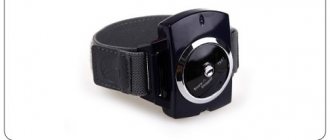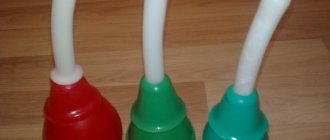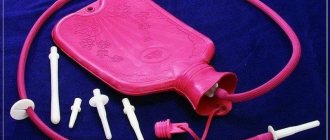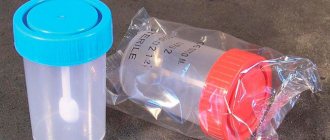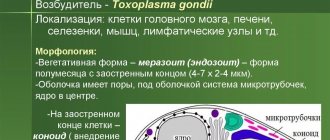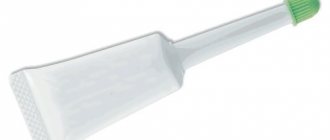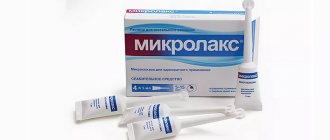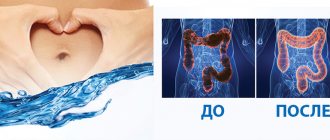Cleansing enema - indications
A cleansing enema is indicated in several cases. The procedure has one goal - to cleanse the intestines of feces.
✔ The procedure is carried out for persistent constipation.
✔ An enema is given to remove toxic substances in case of poisoning.
✔ A cleansing enema is necessary before surgery.
✔ The procedure is prescribed before childbirth.
✔ Before X-ray examinations of the digestive tract.
✔ A cleansing enema is prescribed for endoscopic examinations of the colon.
Cleansing enemas are contraindicated for acute inflammatory and erosive-ulcerative lesions of the colon mucosa. You cannot give a cleansing enema for some acute surgical diseases of the abdominal organs. This is acute appendicitis, peritonitis. A cleansing enema is also contraindicated for gastrointestinal bleeding, disintegrating colon tumors, and in the first days after surgery in the abdominal organs. An enema is also contraindicated in cases of severe cardiovascular insufficiency.
When and to whom can you give an enema?
Pregnant women are given an enema immediately before giving birth.
The essence of a cleansing enema is the desire to “help” the body on its own, in the most natural way for it to get rid of the toxins clogging the intestines.
Abuse of such a procedure can be dangerous to health, so it is usually carried out as prescribed by the attending physician:
- with long-term (from two days or more) stool retention;
- in case of severe intoxication of the body with harmful chemicals or drugs; sometimes - after eating poor quality food;
- for hygienic purposes (for pregnant women - immediately before childbirth, and in other cases - shortly before surgery);
- for constipation accompanied by fever (especially important for infants);
- immediately before examination by a radiologist, endoscopist or proctologist;
- before starting a long session of therapeutic fasting.
You can give such an enema yourself, at home. You just need to purchase everything you need for this procedure at your nearest pharmacy.
Scheme for colon cleansing with enemas
There is a developed scheme for performing cleansing enemas before starting any treatment or in parallel with it. Cleansing with enemas according to the scheme cleanses the body of toxins. Before starting treatment for any chronic skin disease, a cleansing enema is necessary.
Colon cleansing with enemas is carried out according to the following scheme
| A week | Frequency of enemas |
| 1 | Weekly |
| 2 | In one day |
| 3 | After two days |
| 4 and all subsequent ones | Once a week |
Esmarch's irrigator
Esmarch's irrigator.
Photo: Social networks A cleansing enema is given using a special rubber or glass Esmarch mug. Esmarch's mug is a special tank with a hole with a volume of one to two liters.
A special rubber tube about one and a half meters long is attached to the mug. At the end of the tube there is a special rubber or plastic tip. There is also a special tap at the end of the tube, with which you can regulate the flow of water from the mug into the rectum.
When is an enema prohibited?
A complete ban applies in two cases:
- with severe, unbearable pain in the anus;
- with heavy bleeding from the anus.
What to do about pain and bleeding?
If you have pain and bleeding, sign up for a clinic that provides patients with emergency proctological care, including without prior preparation for an appointment with a proctologist.
In most cases, it is possible to get rid of hemorrhoids and its symptoms immediately, on the day of the first treatment. We cleaned the rectum -> received first aid -> underwent diagnostics -> cured hemorrhoids. But in the absence of preliminary cleansing, this chain is broken. Diagnosis becomes impossible, which means treatment is delayed.
Without preparation, you will be given first aid for hemorrhoids: pain and/or bleeding will be eliminated. Then, as soon as the symptoms become less pronounced, you will be advised to come back with a cleansed intestine to undergo a comprehensive examination and treatment.
How much water is required for an enema?
For a cleansing enema, an adult needs from one to one and a half liters of warm water. Recommended water temperature is from 25-35°C.
To stimulate contractions of the colon during atonic constipation, you can use water at a lower temperature - from 12 to 20 °C.
If it is necessary to relax the smooth muscles of the intestines during spastic constipation, you need to use water at a temperature of 37 to 42°C.
To enhance the cleansing effect of the procedure, you can add 2-3 tablespoons of glycerin or any vegetable oil to the enema water. You can dissolve one tablespoon of baby soap shavings in water.
When is an enema possible?
An enema is NOT A MEDICINE. With its frequent use, problems with muscles in the gastrointestinal tract are possible - over time, the muscles will simply “forget how” to work independently. Therefore, it is mandatory to use it only before examination by a proctologist and before treatment. In rare cases, it can be used after removal of hemorrhoids and with the simultaneous presence of hemorrhoids and constipation.
After hemorrhoid removal
After removal of hemorrhoids, as a rule, there is no need for an enema. The exception is the so-called “psychological constipation.” This is the fear of defecation after the procedure. In this case, an enema may be prescribed by a doctor. But more often, doctors still prescribe medications (tablets, powders, drops) to treat constipation.
Hemorrhoids and constipation at the same time
For hemorrhoid treatment to be successful, it is necessary to eliminate the cause of the disease. Therefore, in case of constipation, the first thing to do is to improve the functioning of the gastrointestinal tract. To do this, you should contact a gastroenterologist. If at the moment this is not possible, then as first aid you can resort to a cleansing enema. However, it should never be abused. And at the first opportunity, consult a gastroenterologist, get rid of constipation, and then contact a proctologist for the treatment of hemorrhoids.
How to give an enema at home - algorithm of actions
✔ Pour the required amount of water into Esmarch’s mug, open the tap and fill the rubber tube, displacing the air from it. Lubricate the tip of the tube with Vaseline. Close the tap and hang the mug above the level of the bed on which the patient will lie.
✔ The patient should undress and lie on the bed, turning on his left side. Legs need to be bent at the knees and pulled towards the stomach. In this position, the anus is more accessible for insertion of the tip. A medical oilcloth should be placed under the patient’s buttocks; one edge of the oilcloth should be lowered into the pelvis.
✔ With the first and second fingers of the left hand, spread the patient’s buttocks, and with the right hand, using careful rotational movements, carefully insert the tip of the tube lubricated with Vaseline into the rectum to a depth of 10–12 cm.
✔ At the beginning of inserting the tip, insert the first 3-4 centimeters of the tip towards the patient’s navel. Then turn the tip according to the lumen of the rectum and continue insertion parallel to the coccyx.
✔ After inserting the tip, you need to open the tap and introduce liquid, raising the mug to a height of up to one meter.
✔ If water does not flow, you need to push the tip back a little and increase the water pressure, while raising the mug higher. If the patient complains of pain in the colon, reduce the pressure.
✔ After completing the fluid administration, the patient must be patient and refrain from bowel movements for 5-10 minutes.
Due to the stimulation of colon peristalsis, when administering an enema, the lower intestines are emptied of feces. We can say that a cleansing enema is a simple and painless cleansing of the intestines.
Types of enemas
Cleansing enema Cleansing enemas are used to liquefy and remove gases and contents of the lower parts of the colon. The injected liquid has a mild mechanical, chemical and thermal effect on the large intestine, which enhances its peristalsis, dilutes stool and promotes its rapid and easy excretion. Siphon enema Siphon enema is used for repeated intestinal lavage in cases where a cleansing enema does not bring the desired result. The principle of the siphon enema is based on the law of communicating vessels, causing rhythmic contraction of the intestinal walls. Medicinal enema A medicinal enema is used to inject a small amount of medication into the patient's rectum. As a rule, these are sedatives, sleeping pills, and anti-inflammatory drugs. However, recently such enemas are used less and less, since most medications are now available in the form of suppositories. In the case of using a medicinal enema, a preliminary cleansing enema is required. Nutrient enema Nutrient enema is used when it is necessary to introduce nutrients through the rectum. In the lower part of the large intestine, proteins, various vitamins, amino acids, glucose, and aqueous solutions are absorbed, and therefore this method is also used in artificial nutrition of patients. Diagnostic enema This type of enemas is used to confirm or refute the presence of certain diseases in a patient. Diagnostic enemas include contrast enemas, which are done for x-ray examination of the large intestine. In this case, radiopaque contrast agents are injected into the large intestine.
How to give an enema to a child
The algorithm of actions when performing the procedure on a child differs significantly from giving an enema to an adult. A cleansing enema is a useful procedure, but its effect depends on the amount of water introduced, the pressure of the incoming fluid, the temperature of the water and the speed of its administration.
Without consultation with the doctor, in case of acute abdominal pain, an enema is contraindicated for a child. Enema devices are disinfected by boiling after each use.
✘ For children under 3 years of age, an enema is given with a rubber balloon, that is, a medical bulb.
✘ For children in the first months of life, use canister No. 2, it is designed for 50 ml.
✘ For 3-11 month old babies, use a cylinder No. 2.5, it is designed for 100 ml.
✘ For children aged one to three years, balloon No. 4 is used. Its capacity is 170 ml.
✘ For older children, an enema is given using a special device: an irrigator. This is a rubber bag or kettle to which a tube with a rubber or plastic tip is attached for safe insertion into the rectum. The length of the tube is up to one and a half meters. The higher the irrigator is raised during the procedure, the higher the pressure of the injected fluid. The recommended height for lifting is from 0.5 to 1 meter.
Enema at home
An enema is an unpleasant procedure, and therefore it is best to entrust its implementation to experienced medical professionals who know how to reduce the inevitable discomfort. If travel to a medical facility is not possible due to age or existing medical conditions, or if just the thought of an enema in a public place causes anxiety, it is quite possible to do an enema at home. However, it is worth noting that carrying out the procedure independently is accompanied by some inconveniences - it is difficult to find a comfortable position both for infusing liquid and for holding it, it is difficult to regulate the flow of liquid and it is almost impossible to change the height of the container if necessary. The most effective way is to call a nurse at home who knows how to properly administer an enema. A qualified nurse will ensure that the procedure is not done forcefully, which often happens when performed independently, and will quickly reduce the fluid pressure if the patient experiences the slightest pain. In addition, an experienced nurse will create a favorable psychological environment, relieving the patient of feelings of embarrassment. Do not forget that an enema is a medical procedure, which can only be performed as prescribed by a doctor. Abuse of enemas leads to disruption of the intestinal microflora and further disruption of its daily function.
< back to list
How much water is needed to give a child an enema?
Medical pears.
Photo: Social networks Infants are given 50 to 100 ml of water. Children from one to five years old: 150 to 300 ml of water. Children aged six to fourteen years tolerate the introduction of 300–700 ml of boiled water well.
Liquid should be injected into the rectum slowly, without a sudden increase in pressure. In accordance with the doctor's recommendations, a cleansing enema may contain additives in the form of table salt and baking soda. The recommended dose is 0.5–1 teaspoon per glass of water.
An enema with only water is most often not prescribed for children. Your doctor may recommend adding vegetable oil: 1–4 tablespoons of vegetable oil per 0.5–1 cup of chamomile tea. The water temperature can fluctuate between 27-38 °C.
Children's multidisciplinary medical center for children from 0 to 18 years old
07/22/2016 However, even despite the simplicity of this procedure, to achieve an effective result it must be carried out with great responsibility so as not to damage the baby’s delicate intestines. It should be noted that you should not get carried away with enemas, and carry out procedures only in cases of extreme necessity, when all known methods have been tried, but to no avail. If bowel problems occur too often in a child, it is necessary to identify and treat the cause of their occurrence. In addition, small children simply need to manage their abdominal muscles on their own without outside help. Types of enemas and rules for their implementation An enema is a procedure for introducing liquid into the rectum for the purpose of diagnosis or treatment. Depending on the effect that needs to be obtained, enemas are divided into: Cleansing - their purpose is to free the intestines from gases and feces. Depending on the age of the child, enemas are performed in different volumes: for newborns - 25 ml, at the age of 1-2 months - 30-40 ml, for babies 2-3 months - 50 ml, 2-4 months - 60 ml, at 6 months - 75- 100 ml, 6-9 months - 100-120 ml, 9-12 months - 120-180 ml, 1 year -150 ml, from 1 to 2 years -200-250 ml, from 2 to 5 years - 300 ml, from 5 to 9 years – 400 ml, over 10 years – 0.5 l. The enema liquid should be at a temperature no lower than 28 and no higher than 38 degrees. Medicinal - they are done only as prescribed by doctors in order to influence the medications on the intestinal lining. The temperature of the enema liquid should be 40-41° C. As a rule, through this type of enemas, the baby is given a decoction of chamomile in cases of flatulence, a 2% solution of chloral hydrate (for convulsions), antibiotics in the form of a suspension in warm fish oil, rosehip oil or sea buckthorn (for colitis, for frequent vomiting) and some other medications. Therapeutic enemas are given after cleansing ones. Nutrients - most often given for incessant bouts of vomiting. As a rule, weak glucose solutions and saline solutions are administered. Oily ones – as a laxative for children. Sunflower, hemp or vaseline oil heated to body temperature is injected into the rectum. The effect is achieved after approximately 8-10 hours, so this type of enema is best given at night. In rare cases, I use such enemas in cases of inflammation in the large intestine. Performing an enema on infants Before the procedure, you should thoroughly wash your hands with soap. To carry out a cleansing enema for children (infants, infants), it is necessary to first sterilize the rubber balloon by boiling for half an hour. As an enema, children are given boiled water at a temperature slightly lower than the child’s body temperature (older children can use cooler water). Then fill the balloon with the required volume of water, depending on the age of the baby, and thoroughly lubricate the tip of the balloon with Vaseline or vegetable oil. After this, you need to lay an oilcloth and a diaper on top, on which you place the child on the back and lift the legs up to the stomach, bending them at the knees. Older children (1-6 years old) are placed on their left side, and their legs are pulled towards their stomach. After this, spreading the buttocks, very carefully insert the tip of the balloon into the rectum, after releasing the air from it. A soft and short tip must be inserted completely, a harder and longer one must be inserted to a depth of 4-5 cm. After inserting the tip, slowly squeeze the balloon to introduce water into the intestines. The fluid should be administered as the child inhales. If the child begins to scream, the administration of water should be temporarily suspended. As soon as the required volume of liquid is introduced into the child’s intestines, the tip is slowly removed without unclenching. After that, the child’s buttocks must be squeezed with both hands and held for about a minute so that the liquid remains in the body as long as possible. Then the child can be turned first on one side, then on the other, on his stomach, which will allow the fluid to be distributed throughout the intestines. After completing the procedure, the child must be washed. After use, the container itself is thoroughly washed, boiled, dried and stored in a closed container. For atonic constipation (lack of intestinal tone), the recommended temperature of the injected fluid should be 18-20°C or even lower, and for spastic constipation (excessive intestinal peristalsis) - 37-38°C. To enhance the effect of the enema, it is allowed to add a little (1 tsp) glycerin or vegetable oil to the injected water. An enema should be given to a child during the first three years of life only with the permission of a doctor. After all, frequent constipation or unexplained abdominal pain can be signs of acute appendicitis, volvulus, pneumonia, strangulated internal hernia and some other serious diseases. Using an enema on your own can only be done in cases where it is necessary to reduce body temperature in sick children with high fevers, and also when it is known for sure that constipation in a child is caused by dietary mistakes. Performing an enema for older children. To carry out a cleansing enema in children over five years old, use an Esmarch mug with a volume significantly larger than a balloon (1.5-2 l). The child is placed on his left side, with his legs pulled towards his stomach. Esmarch's mug, after releasing the air by opening the tap, is filled with boiled water at a temperature of 20-22 degrees Celsius. The mug itself is hung on a special tripod at a distance of 50-75 cm from the child. The tip is also lubricated with Vaseline or oil and, slightly spreading the buttocks, it is gradually introduced into the intestine without pressure. At the beginning, it should be inserted a short distance forward towards the navel, then back, parallel to the tailbone, to a depth of 5-10 cm. The rate of fluid flow can be adjusted using a special clamp or tap placed on a rubber tube. After giving the child an enema, the tip must be removed and the child must be allowed to lie down for ten minutes, preferably turning over, until the desire to empty the intestines arises. Contraindications for an enema. Enemas to cleanse the child’s body are contraindicated in cases of suspected acute appendicitis, intestinal bleeding, intestinal obstruction, inflammatory process in the anus and other surgical diseases, also in cases of rectal prolapse and in the first days after surgery on the abdominal organs. In cases where the enema did not give the desired result, do not be alarmed. Water introduced into the intestines will not cause harm to health. The procedure can be repeated after six hours.

